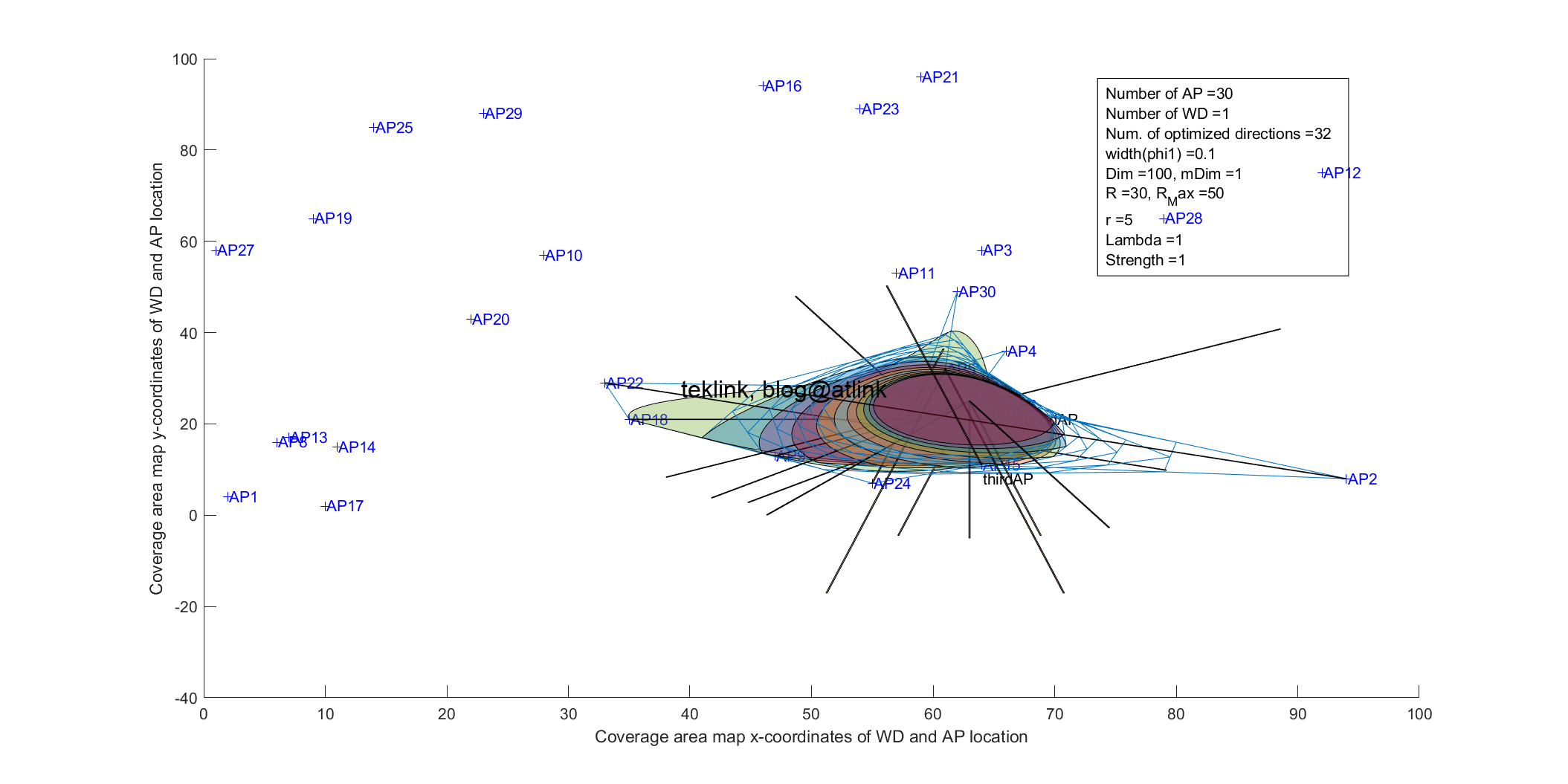Beamforming is a major building block of Radio Resource Management (RRM) in WLAN networks that helps mitigate the interference and maximize the transmission opportunity of Access Points (AP) toward Wireless Devices (WD).
In contrast to the related-work In-Path approaches, we propose a novel Out-Of-Path approach to beamforming calibration that is based on concepts from Computer Aided Graphical Design (CAGD) field and now-a-day network design best practices.
The enhancement that the presented solution adds to the beamforming operation time and results’ accuracy is investigated.
It is demonstrated that the processing of beamformer’s parameters: array elements’ signal weighting and phase shifting, to achieve the desired angle of radiation, direction of arrival and gain, is possible at Wireless Lan Controller (WLC) level in indoor controlled WLAN networks.
Further, we introduce in the same context, the concept of a pseudoAP, a virtual AP that represents a cluster of all possible real AP beamformers to a given WD and investigate the enhancement that it may add.
The results of both simulations show an important enchancement of the conventional beamformer processing time at AP level.
But at WLC level, a trade-off exists between maximizing the transmission opportunity and reducing the required processing time.
https://www.praiseworthyprize.org/jsm/index.php?journal=ireci&page=article&op=view&path[]=22665




